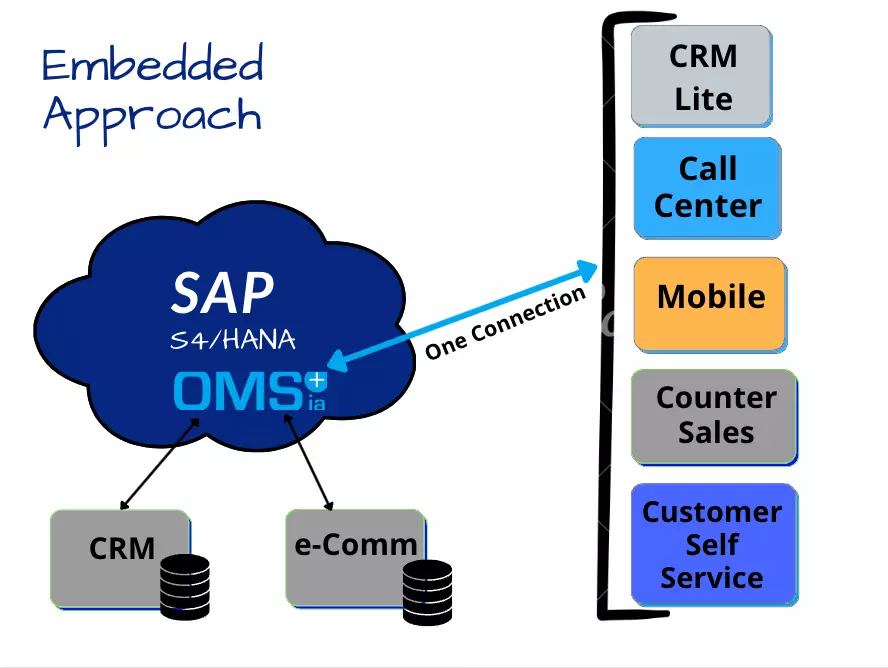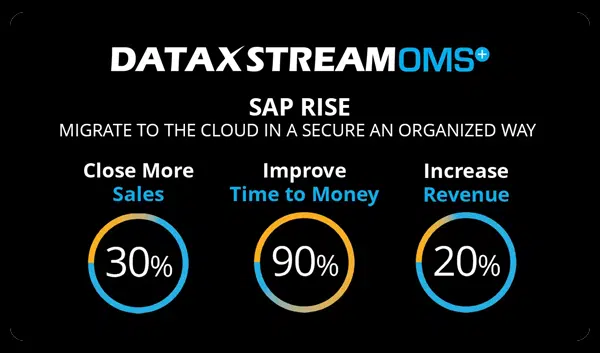ERP systems provide a lot of benefits but are expensive to install and can often be challenging to maintain and upgrade. When it comes time to consider expanding the functionality of these sophisticated systems there are usually two ways companies choose to do this: bolt-on solutions or embedded solutions. We have had discussions with customers over the years about these scenarios and wanted to share thoughts about each and which one best supports future growth towards platforms like unified commerce.
Bolt-on
The term “bolt on” refers to software that can be easily attached or integrated to an existing ERP to provide missing capabilities, or to extend the value of a company’s ERP with an additional application or module. Examples of bolt-ons might include Customer Relationship Management (CRM) software, an e-commerce website, a counter sales application, or even an additional call center module. Companies choose to use these add ons when their existing ERP software does not provide this type of functionality. Rather than incurring significant cost and downtime to rework the system, they simply opt to ‘bolt on’ the necessary application or module to achieve their purpose. Although this can provide some cost savings because you can add functionality without having to upgrade your entire ERP system, there are downsides to this approach.
Organizations often need to write custom interfaces, developed just for that particular installation, in order to integrate into the existing system.
Additionally, these applications also require three kinds of support that can be difficult to maintain and troubleshoot. For every application that is integrated into an ERP (such as SAP), the organizations need to support:
- The ERP side
- The application side
- The ‘tunnel’ where information is passed pack and forth, hence the integration.
Another factor to consider is that because these are all separate applications, they also have separate databases that are not integrated within the core system. What this means is that the data must be synced between each module and the main ERP system. This limits an organization from being able to quickly see real-time information across each of these components. Customer information that is derived from your call center, for example, will not be immediately accessible by your counter sales or e-commerce site. This can lead to an inconsistent customer experience.
 Bolt on
Bolt onBottom line, when using a bolt on approach to enhance the functionality of your ERP system, these applications have to be managed individually. If you consider that many organizations have dozens, if not hundreds, of applications that are all integrating into their ERP—you can quickly see how much time, cost and support is involved in maintaining them. In today’s volatile marketplace, organizations need to be able to make changes to their business processes quickly. If you need to implement a change quickly – it will not be easy to synchronize all of these applications individually and keep pace with today’s business environment.
Embedded
Being embedded, on the other hand, means that the application is installed directly into an organization’s ERP application, which means there is no additional integration required. DataXstream’s OMS+ is an example of an embedded application. We sit directly within SAP and provide a single interface to existing applications which gives these channels access to the same real-time master data from SAP. All the channels are aligned and accessing the same core data. There are no longer multiple databases that need to be managed – only one within the ERP itself. As a result, users have more consistency and visibility across the entire system, which allows them to make better decisions and produces a better customer experience.
 Embedded
EmbeddedReduce cost/complexity
Having embedded applications also significantly lowers the cost of ownership. Organizations no longer need highly specialized skill sets to manage all the nuances of complex, bolted-on, proprietary systems. Our company uses standard SAP technology within our application which allows us to teach the customers how to use our tool set. It should not require a big shift in what your customer already knows to be able to use your application. This ease of use gives organizations tremendous flexibility in being able to hire and retain talent to manage these applications.
From a standards perspective, being embedded allows us to go through the SAP certification process which ensures our software has met certain standards of code and security as well.
Increased agility/no downtime
Organizations need to have the ability to make changes to their business processes quickly to adapt to changing market environments. If data exists in many locations, it becomes disconnected, or siloed. Siloed information becomes a problem when organizations need to make critical, data-driven decisions and do not have all the relevant information. The result is costly. Incomplete data can result in too much supply being ordered and wasted, increase in material costs, deadline delays – all of which impacts the bottom line and decreases customer relations.
If a company wants to change how its processes behave in SAP, they simply make a change and it ripples out to the other applications immediately – there is no downtime. Additionally, embedded (and certified) applications can also be un-installed cleanly using a few simple steps.
In the end, it’s all about speed, better company efficiencies (such as faster transaction processing, more agility to better adapt to changing market or customer needs) and delivering an exceptional customer experience. Siloed systems that have bolted on applications will not give you the ability to quickly react to changing market or customer conditions. Only by unifying the process through an embedded application like OMS+ will you engage better, faster and more accurately with your customers.




